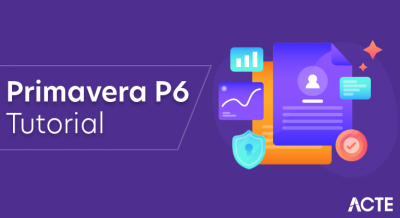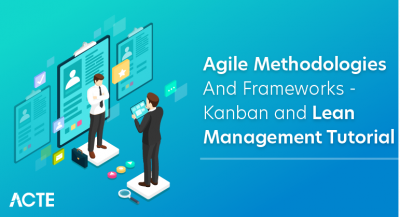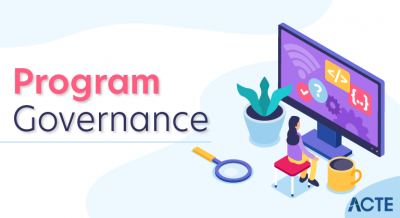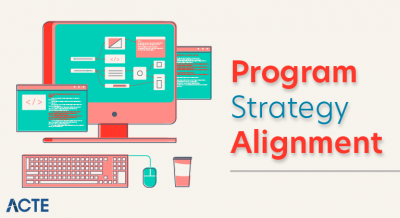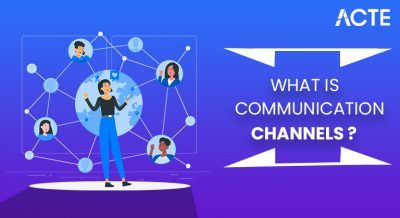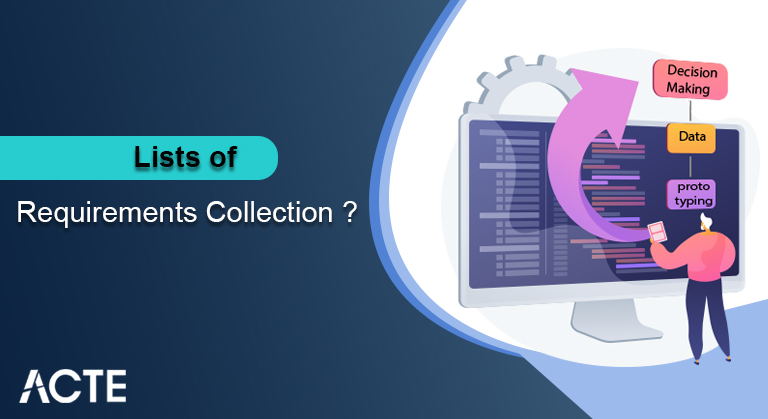
- Introduction to Requirements Collection
- Requirements Collection
- Methods for Requirement Collection
- Features of Successful Requirements Collection
- Requirements Collection Tools
- Requirement Collection Techniques
- What are the Collection Requirements in the scope of the executives?
- The Importance of Requirements Collection in Software Engineering
- Conclusion
- With regards to a venture, necessity assortment assumes a key part. Necessities assortment isn’t just significant for the undertaking; however, it is additionally significant for the venture the executive’s work.
- For the task, getting what the venture will ultimately convey is basic for its prosperity. Through Requirements, the venture board can decide the end conveyances of the task and how the end conveyances should address the client’s particular necessities.
- Even though the Requirements assortment looks very clear; shockingly, this is one of the task stages where the majority of the activities start with some unacceptable foot. As a general rule, the greater part of the bombed projects has flopped because of some unacceptable or lacking necessities gathering. We will examine this in the accompanying segment.
- Partners all the time don’t have a reasonable thought regarding what precisely they need
- At times partners don’t have any idea how to communicate and express their Requirements
- Requirements gathered through verbal associations might be inclined to confusion
- All the time there might be verifiable and implied Requirements and assumptions
- It would be great assuming necessities gathering was pretty much as basic as asking your clients and partners what they need your framework to do. Tragically, it’s rarely that clear.
- As a rule, partners don’t know about every one of the choices that exist with regards to fostering a particular item. Submerged in the current business as usual, their vision will in general be restricted. It’s difficult for clients to separate from how they’re as of now getting things done to envision prospects that are a critical takeoff from what they have now.
- Besides, there could be no silver projectile. No single necessity gathering strategy will assist you with inspiring a total arrangement of Requirements that will top each hole and standoff to examination during approval.
- That is the reason it’s really smart to adopt a multi-layered strategy for necessities gathering. Necessities designing accepted Techniques suggest utilizing an assortment of techniques focused on various periods of the cycle.
- Individual meetings present a few difficulties. They can be interesting to timetable and tedious for the questioners. Also, the necessities you assemble may just start to expose what’s underneath; only one out of every odd questioner is gifted at asking follow-up inquiries continuously.
- Polls (or overviews) can give a proficient other option. They permit circle back to numerous partners simultaneously.
- A thoroughly examined poll that poses testing inquiries is a decent device for getting at those hidden Requirements of which partners may not be completely cognizant, yet which are fundamental for a fruitful plan.
- End clients
- Framework parts the product interfaces with (e.g., sensors or different peripherals)
- Outer frameworks the product associates with.
- Exhaustive connection point investigation truly understanding the intuitive setting of the framework will regularly uncover necessities not promptly apparent to clients.
- Conceptualizing can be proceeded as a component of a studio (see Technique #7, which follows) or all alone, in one or the other enormous or little gatherings.
- In your meeting to generate new ideas, consider various pieces of the framework exclusively. Investigate different consider the possibility that situations and blue-sky thoughts. The overall thought is to split away from existing shows. Think about visionary thoughts for pushing current limits.
- Valuable instruments for meetings to generate new ideas incorporate whiteboards, mind planning programming, and compassion maps (the last option for investigating client needs).
- When you have significant level useful Requirements set up, it is really smart to investigate an assortment of utilization cases and situations.
- Use cases are the particular, individual business destinations the framework should achieve and the different circumstances wherein a given component or usefulness will be utilized. They portray the different outside substances that follow up on the framework and the particular communications they have with the framework to achieve the business objective. Use cases are communicated as bit-by-bit arrangements of assignments performed during an interaction.
- Situations, likewise called client stories, are like use cases in that they depict how the framework will complete an interaction to satisfy a business objective. Their structure, nonetheless, is an account, rather than a specified rundown. They are brief tales with the client in the job of the hero. Situations depict:
- Undertaking’s clients perform
- Give criticism on your item
- Express their necessities
- Assist with directing your product improvement
- Center gatherings can be assembled to by the same token:
- Accumulate data for the improvement of necessities, or
- Acquire input focused on approved recently evoked necessities
- Center gatherings are not quite the same as conceptualizing. Conceptualizing is an overseen interaction that by and large includes interior partners. Center gatherings normally include outside partners.
- Numerous frameworks designers and business investigators are distrustful of utilizing center gatherings to accumulate necessities. Gatherings can be overwhelmed by vocal people with thin plans. Solid conflicts on necessities and elements can make these gatherings useless. Center gatherings can, in any case, be very helpful in specific circumstances. One of these is the assessment of plan models (see method #11) to help approve and settle necessities.
Introduction to Requirements Collection:
Requirements Collection:
Requirements are the most central data for any venture. A task is embraced to make another item or administration or results which will satisfy the necessities of the partners. Requirements are the assumptions for the partners which they have from the ultimate result of the undertaking. Henceforth it turns into the main part of undertaking the executives to initially comprehend the Requirements and afterward guarantee that the necessities are at last satisfied. Necessities are gathered from all suitable and applicable partners. Necessities are gathered through communications with the partners for the most part. Communications might include coordination for certain key partners, and bunch conversations by including various partners all at once. At long last necessities must be concurred by totally concerned partners.
A portion of the critical difficulties in necessities assortment includes:
Methods for Requirement Collection:
Brainstorming – Involving a gathering of partners asking them to give every one of their ideas and thoughts regarding what they will like to find in the ultimate result. This creates numerous thoughts. No limitations are upheld in a meeting to generate new ideas.
Interview – Interviews can be arranged with a portion of the senior partners to see a portion of their Requirements and assumptions
Focus gatherings – Moderated conversation with a gathering of partners having a place with a specific gathering or work and finish Requirements with them.
Facilitated Workshops – Moderated conversation with a gathering of partners having a place with a cross-practical gathering together and conclude a portion of the necessities which will be normal for every one of them
Questionnaires and Surveys – Used for gathering inputs from a huge gathering of partners who might be widespread
Benchmarking – While fostering another item, frequently we can begin with a few benchmark items and thoughts and construct new necessities in contrast with the benchmarked item
Perception and Conversation –Very regularly partners can’t express the necessities because of the absence of abilities and enough information at their end. In such cases, perception Technique is utilized to comprehend the necessities by noticing the as-is processes and along these lines comprehending the Requirements. For the most part, used to comprehend the current manual cycles which should be mechanized.
Ostensible Group Technique – Prioritizing necessities by including the gathering of partners. Recognizing the must-have, ought to have, and could-have Requirements.
Assistance methods – The task group needs to drive and work with the partners so the unmistakable Requirements are gathered.
Fondness charts – Categorizing different necessities in legitimate groupings for better agreement and clearness
Independent direction – Finally the necessities which should be satisfied must be chosen by including the gathering of partners and casting ballot strategies are utilized for the reason.
Prototyping – Requirements gathered by associations are inclined all the time to confusion. To decrease such distortion models are frequently made. A model gives an amazing chance to approve the normal comprehension of the Requirements by all parties.
Features of Successful Requirements Collection:
Following are a portion of the ways to make the Requirements assortment process fruitful:
1. Never expect that you know the client’s necessities. What you generally think, could be very unique to what the client needs. In this manner, consistently confirm with the client when you have a presumption or an uncertainty.
2. Get the end clients required from the beginning. Get their help for what you do. At the underlying levels, characterize the degree and get the client’s understanding. This assists you with effectively zeroing in on the extent of elements. At the point when you are currently gathering the Requirements, ensure that the necessities are practical, explicit, and quantifiable.
3. Zero in on making the Requirements archive gem understood. A prerequisite report is the best way to get the client and the specialist co-op to an understanding. Along these lines, there ought not to be any ill-defined situation in this report. If there are ill-defined situations, consider this would prompt potential business issues.
4. Try not to discuss the arrangement or the innovation with the client until every one of the Requirements is accumulated. You are not in a situation to guarantee or show anything to the client until you are clear about the necessities. Before moving into some other undertaking stages, get the necessities archive closed down by the client. If important, make a model to outwardly delineate the necessities.
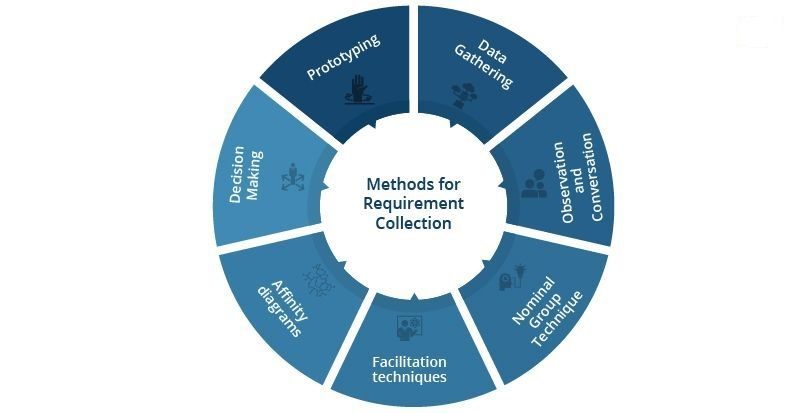
Requirements Collection Tools:
With regards to social occasion Requirements, the most ideal way to do as such contrasts between projects. A few Requirements gathering devices and layouts might turn out better for certain tasks but not others. Here are a few essential instruments that groups can use to assemble necessities.
Context Diagram: A Context diagram delineates the framework’s current circumstance, limits, and all communicating substances. With the framework illustrated in the chart, you can recognize outside and interior perspectives, clients, end-clients, and sellers. This visual chart assists you with acquiring a superior in the general comprehension of the product or item you are creating.
Mind Maps: Mind maps are a customary exercise for thinking of novel thoughts and delineating necessities. Mind planning can assist with driving a group conversation and keep everybody zeroed in on the job needing to be done.
Use Cases: “Use case charts” portray how the product will collaborate with the clients. All means in every communication ought to be delineated, alongside elective ways.
AS-IS and To BE Models: An AS-IS process model portrays the present status of the framework or programming. Then, at that point, the TO-BE model shows the changed framework. This assists with deciding if the changes check out and will work with the framework.
Requirement Collection Techniques:
This article checks out eleven successful necessities gathering Techniques. They will be introduced generally in the request in which they typically show up in the necessities gathering process. It isn’t important to involve every one of them for each undertaking, yet a sound blend of these Techniques, picked given the necessities of your particular venture, will probably further develop your Requirements inclusion and assist you with decreasing Requirements related issues during programming improvement and subsequently.
Interviews
Polls or Surveys
Client Observation
Archive Analysis
Interface examination
Studios
Conceptualizing
Pretend
Use Cases and Scenarios
Center Groups
Prototyping
Requirements Gathering Technique #1: Interviews:
1. Interviews are an extraordinary method for beginning the necessities elicitation process. They are important for social affair foundation data on business needs, clients’ and clients’ concerns, and the worries of care staff and other applicable partners. Meetings can likewise be utilized in follow-up to accumulate more nitty-gritty data.
2. Meetings should cover a different and delegate cross-segment of the framework’s partners. You will need to incorporate the full scope of client and client profiles. This is important to acquire a legitimate point of view on contending needs, so your framework necessities aren’t skewed for one gathering.
3. Whenever you lead interviews, it is essential to pose open-finished inquiries. Open-finished inquiries are those that can’t be replied to with a straightforward “yes” or “no.” They draw out explicit data. They require the interviewee to clarify their considerations and give reasons, which thusly gives setting to assessing and approving the necessities.
4. You’ll likewise need to ask a ton of follow-up inquiries during the meeting. Great subsequent inquiries either drill down for more detail or pull up to get an outline of the unique situation. Certain individuals will quite often talk about particulars and special cases. With them, you’ll have to pull up. Others will discuss setting while never getting into particulars. With those people, you’ll have to penetrate down.
Necessities Gathering Technique #2: Questionnaires or Surveys:
Technique #3: User Observation:
a) Perhaps the most effective way to get what clients genuinely need is to notice them playing out their day-by-day errands. Client perception can be either aloof or dynamic. Dynamic perception posing inquiries of clients while noticing them is the best methodology for acquiring a comprehension of a current interaction. Detached perception is more compelling while social event client criticism on a planning model (see method #11).
b) While noticing clients, record the moves and exercises that take place. What as of now functions admirably? What causes clients trouble? Note the impediments clients should regularly survive.
c) By noticing end clients in the genuine setting in which they play out their undertakings, you’ll acquire a genuine comprehension of what they are facing and what upgrades they need so they can perform better. You’ll then, at that point, be better ready to determine a framework that effectively reevaluates clients’ cycles and awards them far more prominent efficiency and ease of use, rather than just giving them a gradual improvement.
Technique #4: Document Analysis:
1. Now and again ignored, record investigation is one more profoundly successful method for social occasion necessities. Evaluating the documentation of the current framework you’re looking to supplant can help you in proceeding with the AS-IS process examination and hole investigation. The previous assist you with seeing where you can work on the client’s interaction. The last option will help you in figuring out where the business needs to be uncovered before your meetings, surveys, and client perception are not being met.
2. Normally, you’ll need to examine the framework’s necessities archives, if accessible, yet you ought to likewise take a gander at other framework level documentation, for example, clients’ manuals and issue reports.
3. Pieces of data on why the current framework functions as it does are frequently covered inside the particulars and plan documentation. The bits of knowledge acquired from record investigation can assist you with forming further inquiries and assessing the fulfillment of your prerequisite set.
Requirements Gathering Technique #5: Interface Analysis:
Investigating a framework’s points of interaction, both human and machine, is essentially vital to guarantee necessities are finished and the framework will be usable. Interfaces for a product item will incorporate those with:
Technique #6: Brainstorming:
Technique #7: Workshops:
1. While get-together necessities from an expansive range of partners, just normal you’ll hear clashing thoughts. You should resolve these issues, in any case, before execution starts. Necessities studios are a decent technique for settling such struggles.
2. When you have an expansive arrangement of applicant necessities characterized and coordinated, assemble your partners and work out these competitors together. Assemble extra detail. Give a fair hearing to restricting perspectives. Award everybody plentiful chance to give the reasoning to their positions.
3. Try to determine errors and clashes, gain agreement, and approve your necessities. These exercises are imperative to guaranteeing your framework will best address the issues of all clients and partners, in addition to the most vocal gatherings.
Technique #8: Role-play:
a) A few frameworks specific sorts of big business programming, like ERP, for instance, should address the issues of an assortment of client types. Pretend can assist with guaranteeing that the requirements of all clients are being met.
b)In a pretend meeting, various individuals play the jobs of the different client types. Playing the different parts collaborate analyzes individual framework necessities according to alternate points of view and produces conversations and novel thoughts.
c)Pretend is an extra conceptualizing Technique. It is a decent method for acquiring a strong comprehension of how the different pieces of the framework need to capacity to help the general interaction.
Necessities Gathering Technique #9: Use Cases and Scenarios:
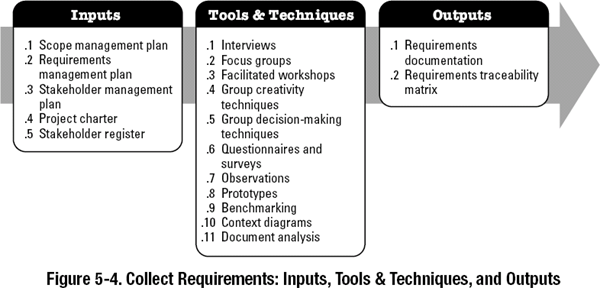
Necessities Gathering Technique #10: Focus Groups
A center gathering (or client bunch) is a get-together of clients or client delegates who meet with you to.
Requirements Gathering Technique #11: Prototyping
There’s an old joke among frameworks designs that the conversation with a client bunch following a planned show regularly resembles this.
Framework engineer: “Anyway, how to treat think?”
Client bunch: “We disdain it.”
Framework engineer: “Ah… alright… what is it you need, then, at that point?”
Client bunch: “Well… we don’t have any idea… BUT IT AIN’T THAT!”
Frequently, end clients and different partners don’t have a reasonable thought of what they genuinely care about. Generally speaking, they don’t have a decent handle of what’s conceivable. Assuming that you can give them something to attempt, in any case, they can normally listen for a minute they like and don’t like with regards to it. That is the place where prototyping comes in. Prototyping allows clients an opportunity to evaluate thoughts on what their next arrangement could resemble. The present fast prototyping instruments permit designers to immediately assemble quite a few intelligent models for clients to attempt.
When the underlying model is constructed, the cycle is an iterative one:
Adjustment of the model
Present-day prototyping apparatuses make it simple for engineers to adjust the model on the fly, so clients can help you rapidly find what will fulfill them. From that functioning model, it’s then a somewhat basic make a difference to pick apart the necessities that depict the acknowledged usefulness.
What are the Collection Requirements in the scope of the executives?
Gather Requirements is the method involved with deciding, archiving, and overseeing partner needs and Requirements to meet undertaking targets. The critical advantage of this interaction is that it gives the premise to characterizing and dealing with the task scope including item scope.
Functional Requirements:
Utilitarian necessities are requirements connected with the specialized use of the framework. Utilitarian necessities state how the clients will cooperate with the application, so the application should have the option to consent and be testable. For the internet-based coordinated effort application, DocTeam, the practical necessities might incorporate depictions of:
a) Content to be made and distributed in the framework (i.e., archives, web journals, recordings, and so on)
b) Tasks performed by each screen
c) Content endorsement work process
d) Investment and utilization reports
Non-Functional Requirements
Non-utilitarian Requirements determine measures that can be utilized to pass judgment on the activity of a framework specifically. These are conditions rather than explicit practices. While useful Requirements characterize what a framework should do, non-utilitarian necessities characterize how a framework should be. Non-utilitarian Requirements are frequently called ”quality ascribes” of a framework.
Models for Doc Team might include:
Execution – what amount of time each page should require to stack
Adaptability – can the framework deal with the huge volume of clients that continues to increment?
Limit – how much stockpiling will be required?
Accessibility – accessibility, and vacation of the application
Security – this incorporates security of the substance and encryption
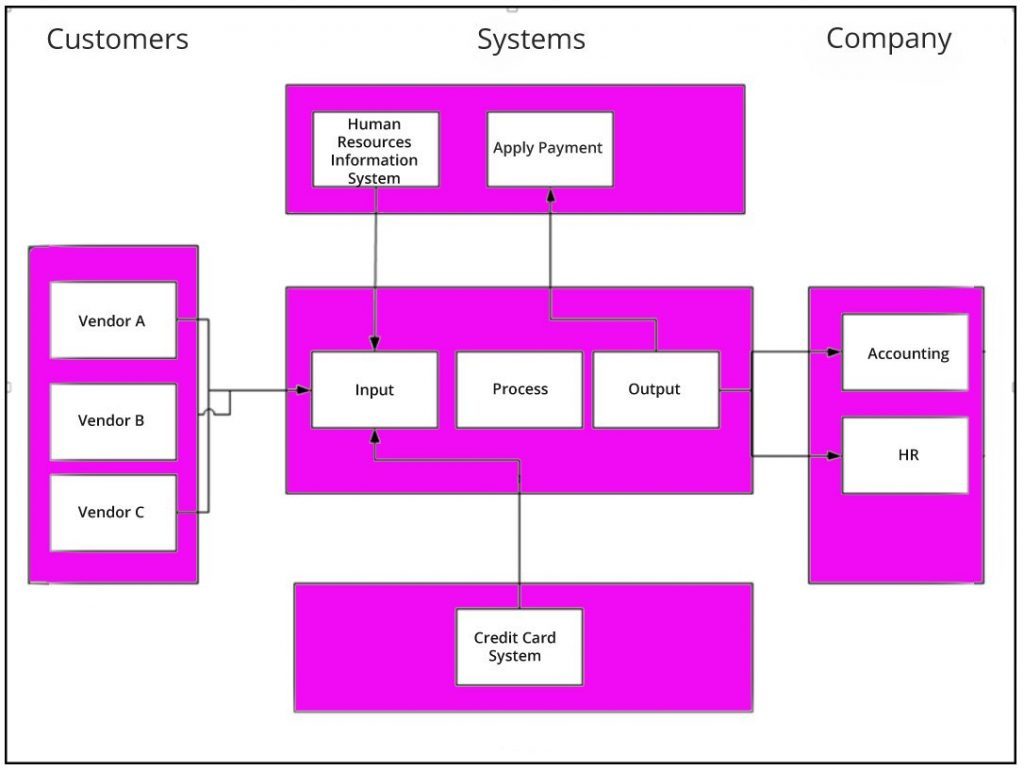
The Importance of Requirements Collection in Software Engineering:
1. With regards to language, engineers will generally be strict leaning. Code is written in unequivocal programming “dialects,” and each piece of code implies a certain something. Conversely, the language we use to speak with clients can be stacked with uncertainty. We should return to our gadget producer model from part I and envision an organization is searching for a superior method for dealing with their stock.
2. Is it true or not that they are alluding to a quick, functional requirement for a superior approach to representing the actual number and areas of their stock? Is the expense of request satisfaction is high requiring an increment in proficiency? Or on the other hand, do they find themselves dropping requests since they don’t have a dependable record of what’s available? Do they require a method for anticipating what stock clients will be interested in? Or then again, would they say they are talking comprehensively and meaning to upgrade their stock frameworks to meet business objectives?
3. It’s not all that straightforward all things considered. To keep away from potential uncertainty traps and make progress, it’s your custom programming advancement accomplice who completely sees every individual necessity of a venture, regardless of how nonexclusive or commonplace the prerequisite appears. That is the place where compelling Techniques for Requirements gathering become an integral factor.
4. How about we take a gander at a basic, standard prerequisite for any web application: the client login structure. While posting their Requirements, a client might request “a client login structure.” This seems straightforward, yet underneath this solicitation is the potential for a ton of intricacy. How about we envision the engineer fabricating the client login structure and dispatching it.
5. The day after the application dispatches, the client observes clients are sharing accreditations, considering simultaneous admittance to limited regions. Since the shield to keep the utilization of one record from two unique areas wasn’t in the undertaking extension (just “login structure”), the engineer hadn’t constructed it. They add it.
6. The following day, another issue emerges. Clients who forget their usernames or passwords don’t have any idea how to recover them. So the engineer returns and sets up username and secret phrase recovery capacities. Before long, however, the client acknowledges clients ought to consent to the agreements before signing in interestingly. And afterward, the frameworks overseer needs a method for tweaking access for clients with an inward organization email address. Etc.
7. This model shows the intricacy of Requirements gathering. What the client believed was a solitary prerequisite was included many, interrelated ones. An engineer who needs a client to succeed shouldn’t acknowledge necessities at face esteem, yet ask the “who,” “what,” “where,” “when,” “why” and “how” questions.
Conclusion:
Necessity assortment is the main advance of an undertaking. If the task group neglects to catch every one of the vital necessities for an answer, the venture will be running with a danger. This might prompt many questions and conflicts later on, and thus, the business relationship can be seriously harmed. Hence, accepting prerequisite assortment is a critical obligation of the venture group. Until the Requirements are closed down, don’t guarantee or remark on the idea of the arrangement.


